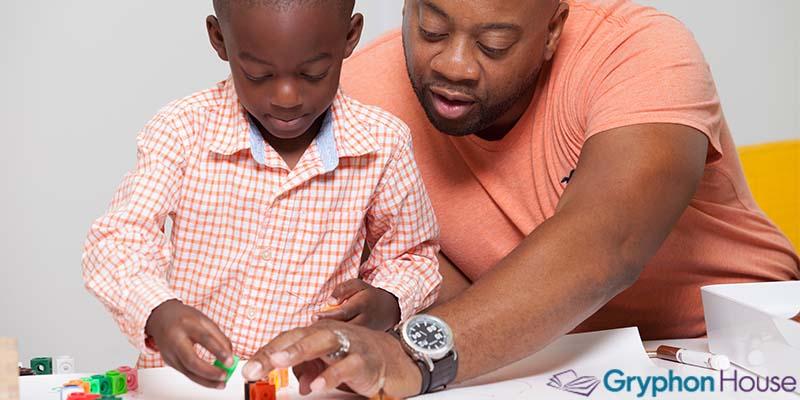Research indicates that when we engage younger children in the STEAM fields, we are promoting inquiry-based thinking and a discovery mentality. Teaching young children STEAM play is a way of teaching them how to research, think, and create as open-ended play becomes part of their early experiences. In addition to these benefits, introducing STEAM concepts using a multisensory approach and in a playful way gives young children a competitive advantage and sets a strong foundation for future study habits.
The good news is that you don’t have to be an expert, a researcher, or a scientist to get your child excited about STEAM careers and STEAM thinking. Remember, most STEAM learning is about exploring and learning from your exploration—so why not explore together? Check out these two exciting STEAM activities below from Simple STEAM: 50+ Science Technology Engineering Art Math Activities for ages 3 to 6, and get the book for many more explorations and activities that will inspire your child’s fundamental learning in each of the STEAM experiments.
Making a Magnetic Powered Car
Children will build a magnetic-powered car to gain an understanding of magnetism and force.

Talk like Technology Experts
- Force: strength or energy exerted or brought to bear
- Magnet: a piece of material (such as iron or steel) that is able to attract certain metals
- Magnetism: the property of attracting certain metals
- Mass: the property of a body that is a measurement of the number of materials that it contains, that causes it to have weight
What You Need
- Toy car
- Road tape (available at craft stores) or painters tape
- 2 magnets, if possible one should be a bar magnet. Safety Note: Keep a close eye on small children when using loose parts such as magnets. Magnets are a choking hazard for young children, so supervision is critical.
- STEAM journal
How to Do It
- Begin the activity by asking children, “What is a magnet?” Discuss how alternative means of power are being explored for use in our cars.
- Talk with children about what you notice about magnets and conduct further research if they are curious to see more types of magnets.
- Tape a magnet to the top of the toy car. Test your toy car by using a second magnet to “push” or “pull” it by moving it toward the toy car.
- Lay down a road for your magnetic-powered car. This is not necessary to test your car but it does make it more fun.
- You can experiment by using a ring, horseshoe, or other magnets.
- Experiment to see if you can make the cars turn, go up a hill, or go backward.
- Encourage children’s curiosity: What would happen if we used different magnets?
- Encourage children’s critical-thinking skills: What can you tell me about making a magnetic-powered car?
Add more STEAM activities:
- Science: Discuss how you can push or pull the car without touching it.
- Engineering: Use blocks and boxes to create a city for your roads.
- Arts: Decorate your city.
- Math: Switch the magnets and record responses. See how far they “push” your car.
Three-Dimensional Art—Making a Tree
Children will learn about three-dimensional art versus two-dimensional art by making a paper tree.

Talk Like Artists
- Autumn: the season of the year between summer and winter; the weather gets cooler
- Leaf: part of the plant that grows from a stem
- Three-dimensional art: art that has height, width, and depth
- Tree: a woody perennial plant having a single, main stem generally with few or no branches on its lower part
- Two-dimensional art: any artwork on a flat surface (painting, drawings, and so on)
What You Need
How to Do It
- If possible, look at some leaves to compare color and size. Ask children, “What can you tell me about leaves on trees?” Talk with children about how many leaves change colors in the fall.
- Show children a picture of a tree and discuss that the picture is two dimensional or “flat.”
- Tell children that you are going to make a three-dimensional tree.
- Take the bag and make many cuts from the top to approximately two-thirds of the bag (to seam or fold).
- Open the bag (you may want to put something in the bottom of the bag to give some weight to assist the bag staying upright).
- Take the top part of the bag and carefully twist just above the seam.
- To form branches, gather two or three strips at a time and twist together.
- Cut and glue small pieces of tissue paper onto the branches.
- Encourage children’s curiosity: Which tree looks more real—the two-dimensional or three-dimensional tree?
- Encourage your children’s critical-thinking skills: What can you tell me about making a three-dimensional tree?
Add more STEAM activities
- Science: Research and discuss seasons and why leaves change colors.
- Technology: Review videos for children on changing seasons and leaves changing colors.
- Engineering: Draw pictures in two dimensions, then try to build a three-dimensional structure.
- Math: Measure the height, width, and depth of objects.


